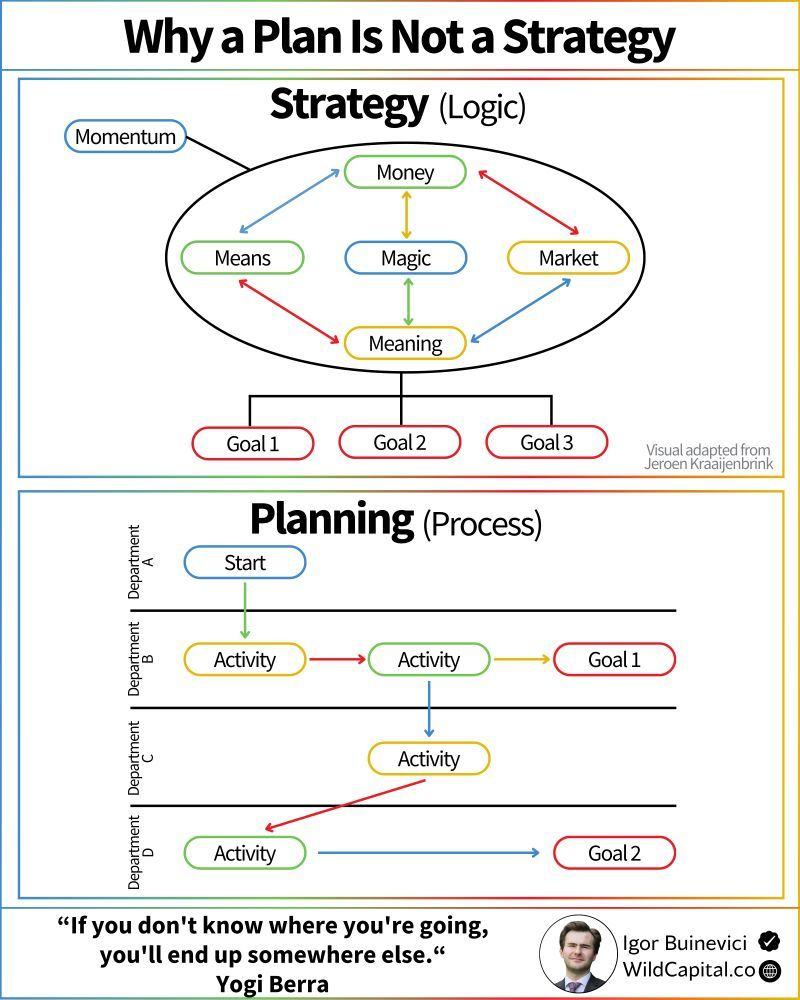If your ChatGPT results feel “meh”,You’re probably skipping structure.
Here’s the winning formula (from one of the best cheat sheets I’ve seen):
40% Content
→ Give it background, context, or raw info
→ “I run a D2C wellness brand targeting busy professionals…”
30% Result Format
→ Tell it how to respond
→ “Give it in bullet points with action items.”
20% Goal
→ What’s the purpose?
→ “To use this in a pitch deck.”
10% Tone + Warnings
→ Set the tone and flag what to avoid
→ “Use a confident but friendly voice. Don’t repeat buzzwords.”
Want to upgrade your prompts instantly?
Be Specific
Give Examples
Define the Role
Set Format, Tone & Goal
Avoid: “Tell me about…”
Structured prompts = Powerful results.
Sign-Off:AI doesn’t make you smarter.But smart prompting makes AI work for you.
Here’s the winning formula (from one of the best cheat sheets I’ve seen):
40% Content
→ Give it background, context, or raw info
→ “I run a D2C wellness brand targeting busy professionals…”
30% Result Format
→ Tell it how to respond
→ “Give it in bullet points with action items.”
20% Goal
→ What’s the purpose?
→ “To use this in a pitch deck.”
10% Tone + Warnings
→ Set the tone and flag what to avoid
→ “Use a confident but friendly voice. Don’t repeat buzzwords.”
Want to upgrade your prompts instantly?
Be Specific
Give Examples
Define the Role
Set Format, Tone & Goal
Avoid: “Tell me about…”
Structured prompts = Powerful results.
Sign-Off:AI doesn’t make you smarter.But smart prompting makes AI work for you.
If your ChatGPT results feel “meh”,You’re probably skipping structure.
Here’s the winning formula (from one of the best cheat sheets I’ve seen):
🔹 40% Content
→ Give it background, context, or raw info
→ “I run a D2C wellness brand targeting busy professionals…”
🔹 30% Result Format
→ Tell it how to respond
→ “Give it in bullet points with action items.”
🔹 20% Goal
→ What’s the purpose?
→ “To use this in a pitch deck.”
🔹 10% Tone + Warnings
→ Set the tone and flag what to avoid
→ “Use a confident but friendly voice. Don’t repeat buzzwords.”
Want to upgrade your prompts instantly?
✅ Be Specific
✅ Give Examples
✅ Define the Role
✅ Set Format, Tone & Goal
✅ Avoid: “Tell me about…”
Structured prompts = Powerful results.
Sign-Off:AI doesn’t make you smarter.But smart prompting makes AI work for you.
0 Комментарии
0 Поделились
204 Просмотры
0 предпросмотр








